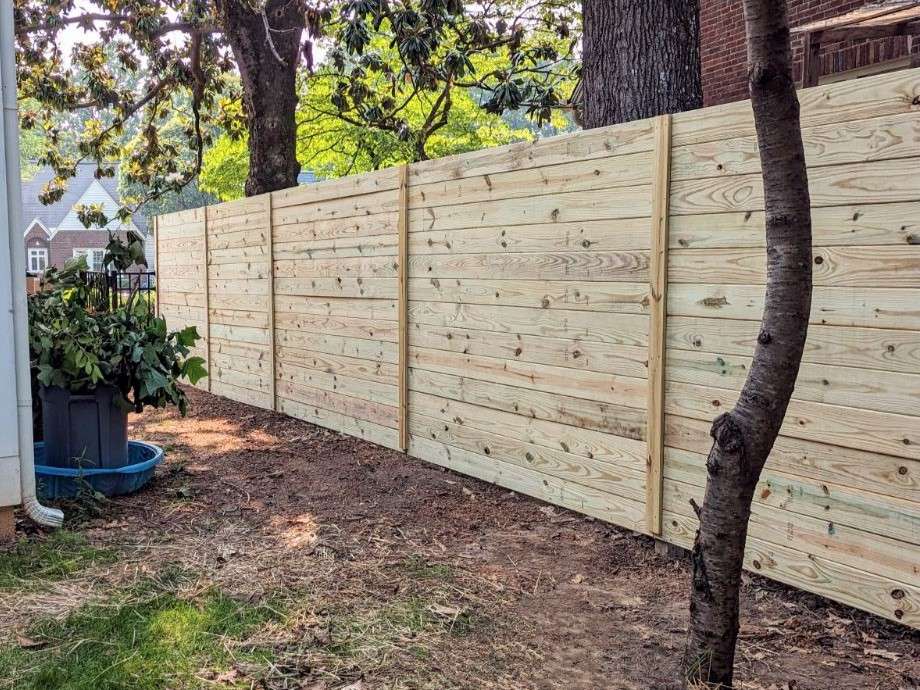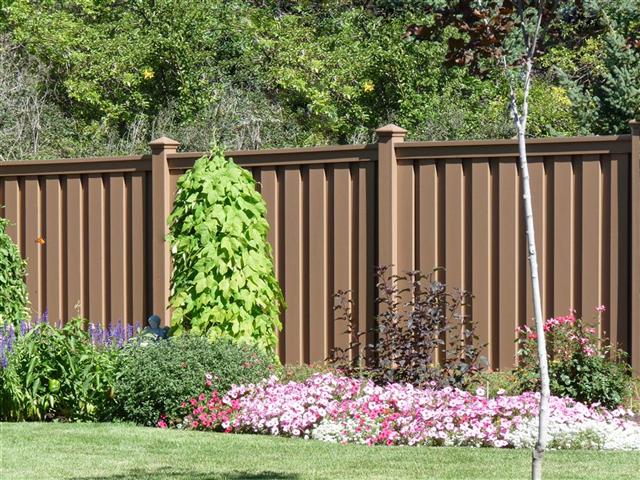All Categories
Featured
Picking the optimum elevation calls for careful factor to consider of numerous elements, consisting of neighborhood policies, your safety requires, and the kind of fencing product you pick. Below's an overview to aid you make the best choice when identifying your fence elevation for maximum safety.
![]()
In some areas, you might also need a license for fencings taller than a specific elevation. Furthermore, make certain you know any neighborhood guidelines, specifically if you stay in an area with a property owners' organization (HOA) that enforces details policies on fencing elevation, style, and material.
The goal is to make it challenging for any person to easily scale or breach the fencing. Taller fencings reduce the risk of break-ins, particularly when integrated with various other deterrents like sharp blog posts or trellis expansions at the top. If your building lies in a high-crime location or you are concerned about intruders, selecting a taller fencing can substantially raise your assurance.
![]()
Wrought Iron Fencings: These are commonly 6 to 8 feet high and are suitable for safety and security purposes. The toughness and longevity of wrought iron make it difficult for burglars to appear or climb. Wooden Fences: While wood fencings give privacy, their safety depends on their elevation and style. A strong wood fence that goes to least 6 feet high can function as a solid obstacle, however including functions like anti-climb tops can boost its security. Chain-Link Fences: Chain-link fencings are frequently picked for their cost-effectiveness and stamina. To enhance safety and security, numerous house owners include barbed or razor cable to the top of the fence or enhance its elevation to 8 feet or more. When picking a product, consider the trade-offs between visual allure and protection. Products like wood or vinyl use personal privacy yet could not be as tough to climb as steel fences, while wrought iron or steel fencings provide resilience and raised safety and security.
On the various other hand, if visibility is a priority-- especially for security objectives or to ensure that next-door neighbors can see dubious task-- after that a much shorter, a lot more clear fencing might be optimal. Chain-link fences, while offering less privacy, permit greater exposure, making it easier for next-door neighbors or passersby to detect anybody trying to breach your fence.
Anti-Climb Features: Add trellis extensions, directed tops, or barbed cable to make it harder for trespassers to scale the fence. Motion Sensors and Surveillance Cameras: Placing cams along your fence line or setting up activity detectors can assist determine dubious task and better prevent intruders. Electric Secure fencing: For greater degrees of safety and security, take into consideration including an electrical fencing to your existing fence. These systems are created to supply a moderate shock to anybody who tries to climb the fencing or touch. 6. Take Into Consideration Looks and Neighborhood Impact. While safety is the primary problem, it's additionally essential to think about the looks of your fencing, specifically if you live in a community with a strong sense of neighborhood. A fencing that is as well high or imposing can create an unfriendly ambience and might not be popular by next-door neighbors.
Consider your community's total aesthetic and choose for a fencing elevation that stabilizes both safety and security and curb allure. A fence that is visually appealing while still giving appropriate protection can enhance both the look and the safety and security of your home.
Conclusion. Picking the appropriate fencing height for optimum safety and security needs stabilizing usefulness, aesthetic appeals, and local regulations. In general, a fence height of 6 to 8 feet is optimal for supplying adequate security versus trespassers, though taller fencings can be made use of for added protection if needed.
- Understand Local Regulations and Zoning Regulations. Prior to you pick a fencing elevation, it's necessary to examine with your regional district or property owners' association to make sure that you remain in conformity with local zoning legislations and policies. The majority of locations have limitations on the height of fencings, particularly ahead lawns or along property lines. Residential fences in front yards are frequently limited to an elevation of 3 to 4 feet, while yard fencings can be higher-- frequently up to 6 to 8 feet or even more.

In some areas, you might also need a license for fencings taller than a specific elevation. Furthermore, make certain you know any neighborhood guidelines, specifically if you stay in an area with a property owners' organization (HOA) that enforces details policies on fencing elevation, style, and material.
- Consider Your Safety Needs. The height of your fencing plays an essential duty in the degree of safety and security it gives. A fence that is also brief might be easy to jump or climb up over, while a taller fence can serve as a stronger deterrent versus trespassers. For ideal safety, consider a fencing elevation of at least 6 feet, with lots of house owners choosing 8-foot fences or higher when protection is a leading priority.
The goal is to make it challenging for any person to easily scale or breach the fencing. Taller fencings reduce the risk of break-ins, particularly when integrated with various other deterrents like sharp blog posts or trellis expansions at the top. If your building lies in a high-crime location or you are concerned about intruders, selecting a taller fencing can substantially raise your assurance.
- Choose the Right Fence Product. The material of the fencing you pick additionally influences the safety and security it uses. Some products give even more robust defense than others, also at the same height. For example:

Wrought Iron Fencings: These are commonly 6 to 8 feet high and are suitable for safety and security purposes. The toughness and longevity of wrought iron make it difficult for burglars to appear or climb. Wooden Fences: While wood fencings give privacy, their safety depends on their elevation and style. A strong wood fence that goes to least 6 feet high can function as a solid obstacle, however including functions like anti-climb tops can boost its security. Chain-Link Fences: Chain-link fencings are frequently picked for their cost-effectiveness and stamina. To enhance safety and security, numerous house owners include barbed or razor cable to the top of the fence or enhance its elevation to 8 feet or more. When picking a product, consider the trade-offs between visual allure and protection. Products like wood or vinyl use personal privacy yet could not be as tough to climb as steel fences, while wrought iron or steel fencings provide resilience and raised safety and security.
- Personal Privacy and Presence Considerations. If personal privacy is a substantial issue, specifically in houses, you may like a taller fencing that obstructs the sight from the exterior. Solid timber or plastic fencings that are 6 to 8 feet high can avoid others from seeing right into your residential property, which helps enhance security by lowering the possibility of trespassers looking your home.
On the various other hand, if visibility is a priority-- especially for security objectives or to ensure that next-door neighbors can see dubious task-- after that a much shorter, a lot more clear fencing might be optimal. Chain-link fences, while offering less privacy, permit greater exposure, making it easier for next-door neighbors or passersby to detect anybody trying to breach your fence.
- Additional Safety And Security Attributes to Improve Height. While elevation is a vital element of safety, it is essential to bear in mind that a high fence alone might not suffice to prevent figured out trespassers. Think about combining your fence with various other security attributes for optimum protection:
Anti-Climb Features: Add trellis extensions, directed tops, or barbed cable to make it harder for trespassers to scale the fence. Motion Sensors and Surveillance Cameras: Placing cams along your fence line or setting up activity detectors can assist determine dubious task and better prevent intruders. Electric Secure fencing: For greater degrees of safety and security, take into consideration including an electrical fencing to your existing fence. These systems are created to supply a moderate shock to anybody who tries to climb the fencing or touch. 6. Take Into Consideration Looks and Neighborhood Impact. While safety is the primary problem, it's additionally essential to think about the looks of your fencing, specifically if you live in a community with a strong sense of neighborhood. A fencing that is as well high or imposing can create an unfriendly ambience and might not be popular by next-door neighbors.
Consider your community's total aesthetic and choose for a fencing elevation that stabilizes both safety and security and curb allure. A fence that is visually appealing while still giving appropriate protection can enhance both the look and the safety and security of your home.
Conclusion. Picking the appropriate fencing height for optimum safety and security needs stabilizing usefulness, aesthetic appeals, and local regulations. In general, a fence height of 6 to 8 feet is optimal for supplying adequate security versus trespassers, though taller fencings can be made use of for added protection if needed.
Latest Posts
Maintain Your Carpet Looking Its Best with Easy, Expert Treatment
Published Apr 19, 25
1 min read
About Us: Learn More The Expertise of Montclare Auto Repair and Our Commitment to Quality
Published Apr 19, 25
2 min read
Find Out the Montclare Advantage - Top-Quality Auto Service
Published Apr 18, 25
2 min read
More
Latest Posts
Maintain Your Carpet Looking Its Best with Easy, Expert Treatment
Published Apr 19, 25
1 min read
About Us: Learn More The Expertise of Montclare Auto Repair and Our Commitment to Quality
Published Apr 19, 25
2 min read
Find Out the Montclare Advantage - Top-Quality Auto Service
Published Apr 18, 25
2 min read